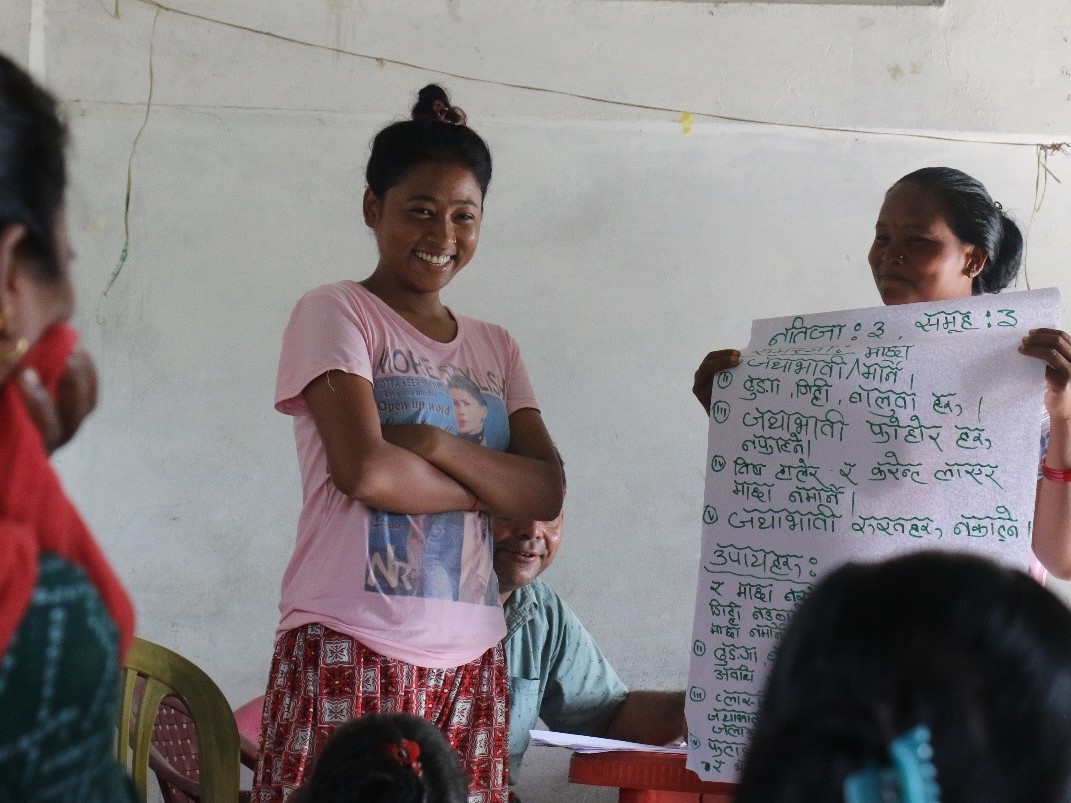Protecting Smooth-coated otters in Nepal

Participants during FPIC. Credit - WWF Nepal, Aashish Kapali
Community stewardship: a pathway to sustained otter conservation
The Smooth-coated otter is a charismatic flagship species that wins hearts with its adorable appearance and playful nature. These otters play a crucial role in maintaining healthy aquatic ecosystems, yet they are neglected and at risk owing to increasing pressures on their habitat.
To reduce the threats to otters in Nepal, WWF is leading a project with partners* that is building local community stewardship for the conservation of otters and their prey base, raising awareness, and strengthening communities’ livelihoods.
The project is based in the Lower Karnali Watershed in Nepal’s Terai Arc Landscape. The area is home to Indigenous communities such as the Sonaha, who depend on rivers for their livelihoods. ‘Sonaha’ is derived from ‘Son’ (meaning gold), which reflects this community’s practice of gold panning and fishing for sustenance. The watershed features a mosaic of habitats, including rivers, riverine forests, floodplain grasslands and oxbow lakes. These habitats support numerous fish species and provide homes for many International Union for Conservation of Nature’s Red List species, such as the Critically Endangered Gharial crocodile, the vulnerable Mugger crocodile, and the Endangered Gangetic River dolphin – along with the vulnerable Smooth-coated otter.
"These otters play a crucial role in maintaining healthy aquatic ecosystems, yet they are neglected and at risk owing to increasing pressures on their habitat."
Community members are the foundation
Inclusive decision-making has been fundamental to the project. Our partners began by consulting with village chiefs, community forest user groups and ward chairpersons. They then held focus group discussions and community consultations to identify priority river stretches and adjoining hotspot areas. Crucially, they conducted free, prior, and informed consent to ensure the Indigenous community’s consent, incorporate local knowledge and traditions, ensure equity among marginalised communities, and minimise and mitigate conflicts. This approach has been important in implementing conservation-based activities efficiently and ensuring sustainability.
To foster collaboration and ownership among community members, the project has formed 15 Community River Stretch Management Groups along the river stretch, comprising 375 individuals, with 68% of the participants being women. Group members have been the foundation of the project’s activities. These groups monitor the river stretch to curb illegal and destructive fishing activities as well as unsustainable river aggregate extraction. This helps to safeguard the habitat of Smooth-coated otters and their prey base.
Furthermore, to nurture citizen scientists, our partners have drafted a ‘Smooth-coated otter Identification and Monitoring Protocol’ and provided training for community members.
“The river has been a way of life for us,” says Amit Sonaha. “We Sonaha live by the river and perish by the river. We have witnessed both the rage and the rewards that the Karnali provides. As a fishing community, we used to view otters as our enemies because they often stole our catch from the nets. Nowadays, I see them as animals, with the right to live.
Since we know the ins and outs of the river, some people contact us to catch a glimpse of an otter. Otters live in groups and are very elusive; so people often get excited when they see their spraints and footprints.”

Overcoming challenges
Illegal and destructive fishing, along with unsustainable river aggregate extraction, are major challenges in the Lower Karnali River. To address these issues, the project partners have led training workshops on sustainable fishing practices and river monitoring, to empower community members by equipping them with the knowledge and skills necessary to manage their resources effectively.
Local government agencies have also received training on otters and their prey base, the Aquatic Animal Protection Act, and sustainable river aggregate extraction. This training helps them address and find solutions to ongoing issues and threats. Additionally, regular quarterly meetings with local governments are organised to strengthen and foster collaborative efforts, as well as to facilitate knowledge and learning exchanges to tackle these challenges effectively.
Shifting toward sustainability
Amrit Lal Tharu, a member of the Gochali Community River Stretch Management Group says the training has profoundly affected his perception and behaviour. Previously, he had fished regardless of the season, species or time. “I used to fish day and night, thinking the Karnali was an unlimited source of fish,” he says. “But over the years, we noticed a decline in the catch per effort, without considering the consequences of our actions. Nowadays, I engage in other livelihood opportunities during my spare time instead of fishing.”
Nirmaya Chaudhary and her neighbours used to gather and fish in the river. They would often return empty-handed after long hours, and would frequently feel discouraged. Last year, Nirmaya received training in grass-based handicrafts. With market assurance through collaboration and high demand locally and nationally, she is now more encouraged to engage in her newly acquired skill.
“People frequently pay in advance for the delivery of our finished products,” she says. “Witnessing this, my neighbours have also become interested in learning the skill. Now, we gather together to craft grass-based baskets and other items based on market demand.”
Asmita Tharu, the daughter of a former Kamaiya (or bonded labours), has always lived with uncertainty. Working for a daily wage and spending much of her time fishing in the Karnali River, the question of sustenance has always been paramount for her. Last September, she became a member of the Community River Stretch Management Group and was selected as a beneficiary of a livelihood intervention focused on vegetable farming. Asmita now feels confident in her skills and aims to expand her farm. “Last year, I harvested 75 kg of cucumbers in a single harvest,” she explains. “This showed me that I am doing something right and am on the right path. The struggle of fishing for long hours, risking my safety and living with uncertainty now seems somewhat meaningless.”
"Project partners have led training workshops on sustainable fishing practices and river monitoring, to empower community members by equipping them with the knowledge and skills necessary to manage their resources effectively."
The project has demonstrated the significance of community engagement, inclusive planning, and empowering practices in conservation efforts aimed at preserving the Smooth-coated otter population while simultaneously enhancing the livelihoods and resilience of local communities. It is still in its early stages and faces daunting challenges, but we extend our sincere gratitude to our partners, donors, local governments, other government line agencies and communities for the collective efforts they have made already in conserving this valuable ecosystem.
* We’re working in collaboration with the Nepal government, WWF-Nepal and local partners Sonaha Bikash Samaj, Freed Kamaiya Women Development Forum, Dolphin Conservation Centre, and the Small Mammals Conservation and Research Foundation.
Written by Aashish Kapali and Rajesh Sada. For more information on this Darwin Initiative Main project 30-017, led by Worldwide Fund for Nature (WWF) – UK, please click here.

 Back
Back